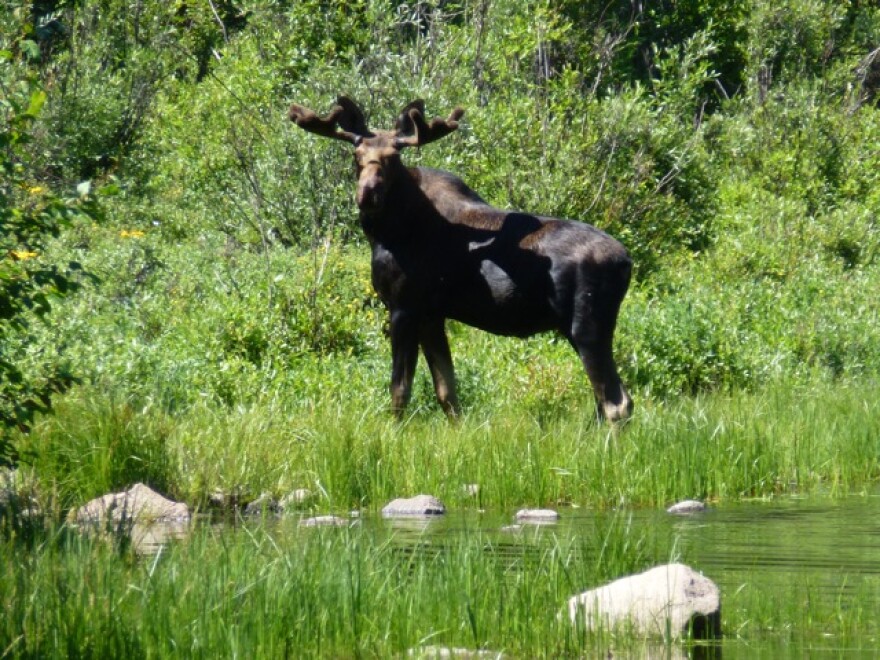Unlike other Western states, Colorado’s moose population is growing. It’s healthier than ever with an estimated 2300 moose across the state. While other states are grappling with why their herds are shrinking, Colorado is studying the population’s fast growth. Aspen Public Radio’s Marci Krivonen has more.
Anda RojsSmalls has lived in the Aspen area for over a decade. But, it was just recently that she saw a moose.
"My first moose sighting was about two years ago, in the summertime, with my kids up at the Maroon Lake," she says.
She says a female moose, or cow, was bathing in the lake with two of her calves.

"It was totally cool because I think they look so funny, I think they’re just a funny looking animal with the long face and their gangly legs. Their legs seems so skinny for how big they are."
Rojs Smalls is one of a growing number of people glimpsing moose in Colorado.
"Moose populations in Colorado are one of our success stories. Moose populations have been increasing pretty steadily in this state," says Brad Petch.
He's with Colorado Parks and Wildlife and helps manage moose in the northwestern part of the state. It’s unclear whether moose are native to Colorado. Moose were first introduced in the 1970’s. Since then, their growth has exceeded expectations.
"To some extent it’s taken us a little bit by surprise, at least a couple of our more recent transplants have reached the objective we want to maintain much more quickly than we anticipated," he says.
Part of the reason moose are multiplying quickly is because of habitats in good condition and favorable weather. It’s not the case in other parts of the country.
Minnesota Public Radio reports the moose population there dropped so steeply, moose hunting season was canceled this year. Climate change, disease, parasites and a changing habitat have been cited as possible reasons for the decline. Meanwhile, in the Rocky Mountain West, Montana and Wyoming have also seen shrinking numbers of moose.
One herd in southwestern Colorado has seen a lower rate of growth relative to the more northern herds. But, overall, Colorado is escaping the trend of declining moose.
Kevin Wright hikes up a trail in the Maroon Valley outside of Aspen, where he saw a moose. He manages wildlife in the Aspen area for Parks and Wildlife.
"I was on horseback, so I was actually fairly close, probably within 50 yards, and we just stopped and held our ground and stayed really still and she came up and looked at us," he says.
In the Maroon Valley alone, about five moose forage on grass and take shade in spruce fir forests. Wright estimates between 20 and 30 moose have made their way into the Roaring Fork Valley.
With more moose comes more problems, says Wright. People often get too close.
"What we have trouble with is everyone trying to get closer and closer and closer to get that photograph opportunity and that's the worst thing in the world you can do. If you get too close, especially with a cow and a calf, she'll pin her ears back and she'll charge."
In June, a woman was charged by a moose in Grand Lake. She was walking her dog and got as close as 10 feet from the moose and its calf. Wright says people should keep such incidents in mind because the moose don’t appear to be going away anytime soon.



